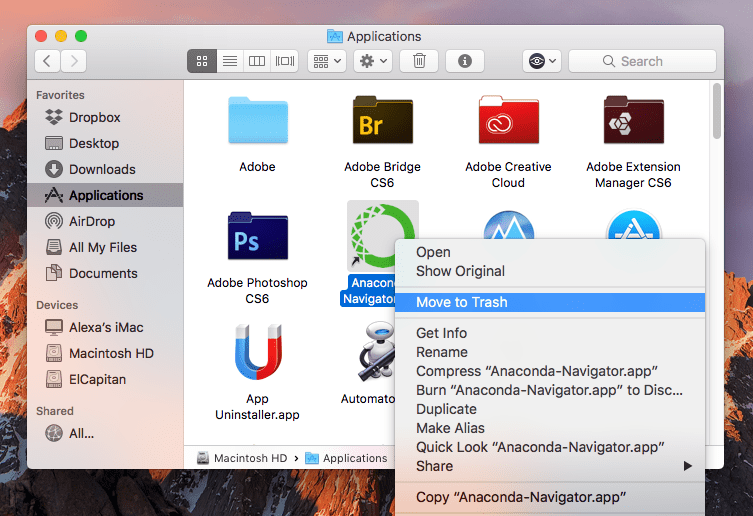


In our case: > brew install openssl readline sqlite3 xz zlib tcl-tk libffi. Note that if you associate the Launcher app with files, and you have multiple python versions installed on your Mac, you might want to customize the extension for the python version you're using (eg. For pyenv to work properly, we need to install several dependencies3. The first step in downloading Anaconda is to confirm which architecture your Mac is using. py extension with the launcher app (which will allow you to simply double-click a script in Finder to run it with the launcher app). You can run scripts, without being in Terminal, by either dragging/dropping them onto the Python Launcher app's dock icon OR associating the. 1 Go to the Anaconda Website and choose a Python 3.x graphical installer (A) or a Python 2.x graphical installer (B). You can use the version-specific IDLE app from within the Applications folder. You can use a virtual environment, such as the one included in P圜harm or explained in 's tutorial for Virtual Environments and Packages, by using the appropriate framework version. It will also install the appropriate python executable in the system frameworks folder, eg /Library/Frameworks/amework/Versions/3.10/Python These are the steps that worked for me to install TensorFlow and Jupyter Notebook on my new MacBook M1 Apple Silicon (arm64) and now I can enjoy all the computing power when doing machine learning. The process will place some informational files and version-specific IDLE and Python Launcher apps under a version-specific folder in Applications. pkg file, which, as expected, you double-click to install. (These versions will work for both Intel and Mn (eg M1, M2) Macs.)
#Anaconda install mac m1 download
Simply download the desired universal2 version from Python Releases for macOS. No brew required (except drinking the joyful one at the end of the day).


 0 kommentar(er)
0 kommentar(er)
